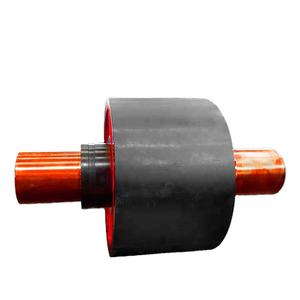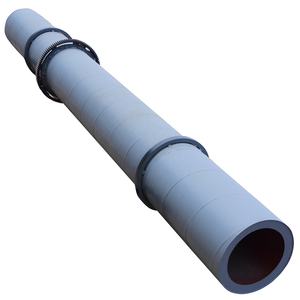**Iron Scourge of the Rainforest: Assessing Heavy Machinery’s Impact on Amazon Deforestation**
(Iron Scourge of the Rainforest: Assessing Heavy Machinery’s Impact on Amazon Deforestation)
The Amazon rainforest, often referred to as the “lungs of the Earth,” plays a critical role in regulating the planet’s climate, sequestering carbon dioxide, and supporting unparalleled biodiversity. However, this vital ecosystem is under relentless threat from deforestation, driven by agricultural expansion, illegal logging, and infrastructure development. Among the most significant contributors to this environmental crisis is the widespread use of heavy machinery, which has become an indispensable tool for clearing vast swathes of forest. As a mechanical engineer, it is imperative to examine the role of heavy machinery in Amazon deforestation, assess its environmental impact, and explore potential solutions to mitigate its destructive effects.
### The Role of Heavy Machinery in Deforestation
Heavy machinery, including bulldozers, excavators, and chainsaws, has revolutionized land-clearing operations in the Amazon. These machines enable rapid and large-scale deforestation, far surpassing the capabilities of manual labor. Bulldozers, for instance, can flatten hundreds of acres of forest in a matter of days, while excavators are used to uproot trees and prepare the land for agricultural or industrial use. Chainsaws, though less powerful, are equally destructive when deployed en masse by illegal loggers.
The efficiency of heavy machinery has made it a preferred tool for both legal and illegal activities in the Amazon. Large-scale agricultural enterprises, particularly those involved in soybean cultivation and cattle ranching, rely on these machines to clear land quickly and cost-effectively. Similarly, illegal loggers use heavy machinery to extract valuable timber, often operating in remote areas where enforcement is weak. The result is a devastating loss of forest cover, with profound implications for the environment and local communities.
### Environmental Impact of Heavy Machinery
The environmental impact of heavy machinery in the Amazon is multifaceted and far-reaching. First and foremost, the physical destruction of the forest leads to habitat loss, threatening countless species of plants and animals. The Amazon is home to an estimated 10% of the world’s known biodiversity, and the loss of forest cover disrupts ecosystems, leading to species extinction and a decline in genetic diversity.
In addition to habitat destruction, heavy machinery contributes to soil degradation. The weight and movement of these machines compact the soil, reducing its porosity and impairing its ability to absorb water. This, in turn, increases the risk of erosion and reduces the soil’s fertility, making it less suitable for agriculture in the long term. Furthermore, the removal of trees disrupts the water cycle, leading to reduced rainfall and altered weather patterns both locally and globally.
Heavy machinery also plays a significant role in carbon emissions. The combustion of diesel fuel in these machines releases greenhouse gases, contributing to climate change. Moreover, the deforestation they facilitate results in the release of stored carbon dioxide from trees and soil, further exacerbating global warming. The Amazon rainforest is a critical carbon sink, and its destruction undermines global efforts to combat climate change.
### Mitigating the Impact of Heavy Machinery
Addressing the environmental impact of heavy machinery in the Amazon requires a multi-pronged approach that combines technological innovation, policy interventions, and sustainable practices. As a mechanical engineer, I believe that technological advancements can play a crucial role in reducing the destructive effects of heavy machinery.
One potential solution is the development of more environmentally friendly machinery. Electric or hybrid heavy equipment, powered by renewable energy sources, could significantly reduce carbon emissions and noise pollution. Additionally, the use of precision technology, such as GPS-guided machinery, could minimize unnecessary land clearing and reduce the overall footprint of deforestation activities.
Policy interventions are equally important. Governments and international organizations must enforce stricter regulations on the use of heavy machinery in the Amazon. This includes cracking down on illegal logging operations, imposing penalties for environmental violations, and promoting sustainable land-use practices. Certification programs, such as those for sustainable timber and agricultural products, can also incentivize responsible behavior among businesses.
Finally, promoting reforestation and afforestation efforts is essential to counteract the damage caused by heavy machinery. Restoring degraded land and planting new trees can help rebuild ecosystems, sequester carbon, and support biodiversity. Community-based initiatives that involve local populations in conservation efforts can also foster a sense of ownership and responsibility for the forest.
### Conclusion
(Iron Scourge of the Rainforest: Assessing Heavy Machinery’s Impact on Amazon Deforestation)
The use of heavy machinery in the Amazon rainforest has become a double-edged sword, enabling economic development while driving environmental destruction. As mechanical engineers, we have a responsibility to innovate and advocate for sustainable practices that minimize the impact of our technologies on the natural world. By developing cleaner, more efficient machinery, supporting policy reforms, and promoting reforestation, we can help protect the Amazon and ensure its survival for future generations. The stakes are high, and the time to act is now.


